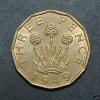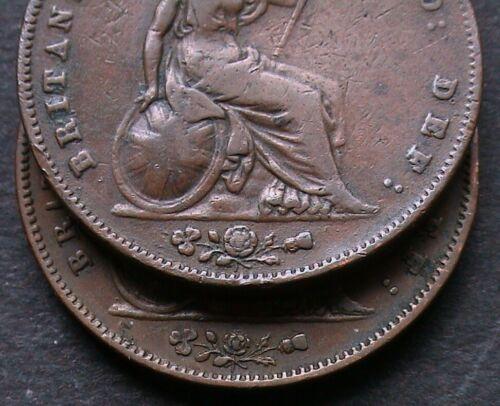-
Posts
8,081 -
Joined
-
Last visited
-
Days Won
262
Content Type
Profiles
Forums
Events
Downloads
Store
Gallery
Articles
Everything posted by 1949threepence
-
Jack Relph also has a Medusa specimen Richard, although you may already know about that. Link is here anyway. ETA: apologies, hadn't noticed it was already posted.
-
I think we can safely assume significantly <20 of them !
-
As an exercise of pure interest it would be useful to get an idea, even if you took the page down later. The fact that (apparently) neither Bramah nor Peck observed any, surely indicates that there aren't many around, as the variety is distinctive and obvious enough to have been noticed and included by them. Although I agree with Ian, there is a high probability of a > 20 extant population.
-
Ian, I can only stand and applaud not only at your initial dedication at assembling this information between 2006 and 2011, but also in taking the time to trawl through the images in order to arrive at a number of large rose types to the remainder of the 1858 population included in your study. Thanks and maximum respect to you for this. Two points from me. Firstly I never imagined the large rose as a proportion of the rest, would be as low as 0.54%. That is a genuine surprise, and I can only say how pleased I am to have secured one, albeit at relatively low grade. Second point is from what John said about him first becoming aware of the existence of this type from "Coin Market Values" in 1998 - only 22 years ago. Obviously that still doesn't pinpoint exactly when and who. Maybe whoever it was didn't treat it as a revelation because they assumed it was already known about. So it actually became more widely known about by stealth, as it were. Previously, I simply couldn't understand why neither Bramah nor Peck had come across this type and mentioned it in their writings. But with that kind of scarcity wrapped within what is the commonest pre 1860 Victoria year, it perhaps becomes more understandable. Finally I think I know who Rashenly might be...........
-
Thanks Ian.
-
Indeed, great point Richard.
-
Anyway, thanks gents. I've learnt a lot today, as no doubt have others.
-
The position of the colon on the first example (large rose/small date) is in pretty much the same position as the intermediate colon (Peck 1503) on the 1853. ETA as well as the two stops being smaller and further away from each other.
-
Surely. Apologies though, I think I got a bit carried away in describing it as UNC. Looking at it again with a more critical eye, it's actually much closer to GEF/EF. Although if you look at the breast area you could be forgiven for thinking it's a lower grade than that on the reverse. Nonetheless, I think it makes the point very well about the worn breasts.
-
I think there may well be two separate factors at work here. The first is undoubtedly wear. As Derek Allen says at page 110 of his book "The standard guide to grading British Coins":- That is common to the entire series. You can't miss it. Affects even pennies with much lustre still on them. The second factor is a weak strike on coins which are otherwise uncirculated. Just co-incidental that the same area is affected. Another obvious consideration is that if the breast is weakly struck to start with, it will wear quicker anyway. A vicious circle.
-
In many cases I think it has to be, as the coins concerned are otherwise immaculate.
-
It's certainly a very nice problem free specimen. Shame the series has that weakness with the right breast wearing away so quick. I bought an UNC 1848 which has a superb obverse but an almost breastless reverse. So whether it's actual wear or die wear, or both, I don't know. It's something Derek noted as actual wear in his grading book.
-
Yeah, the right breast has worn away. Appalling.
-
Thanks a lot, Martin. Looking forward to seeing it. Thanks also for the heads up on the large rose, small date variety. I didn't know about these. As far as the small date specifically, I've already noticed a number of large dates being touted as small dates. I think there's a few dealers who can't really tell the difference. But of course a genuine small date will be instantly visible as such, alongside a large date.
-
Just as a matter of interest, do you know whether Frank Hulett is any relation to the late Dr John Hulett, whose very extensive collection has been spread over several DNW auctions? I only ask because Hulett is not an especially common surname, and there is an obvious coins link.
-
Thanks John. Thought it must be a relatively recent find.
-
Changing the subject completely, what does anybody know about the history of the 1858 "large rose" penny? As in when was the variety discovered, and who discovered it? Clearly wasn't Bramah or Peck as neither make any mention of it, and I wouldn't have thought it would have been regarded as a "minor variety" by either. They can't be that scarce as I've seen a fair few on offer and a number already sold. Also I've just managed to get one for £40.99 - admittedly in not great condition, but still. Thanks in advance. Picture: side by side - large rose above, small rose below
-
Hmmm, well, whatever. I can only quote John (Stephen) Jerrams on this issue:-
-
Yep, I wouldn't pay £9,999 for it. Without actually seeing it in hand, it's difficult to make an informed comment. It would be very interesting to see what the view of the Royal Mint was.
-
Probably reflects pre meltdown numbers.
-
True, and it's only last year that Terry and I observed the fact that even high grade specimens change hands at very modest prices (about £250), despite their rarity at that grade. But that still doesn't negate the fact they are rare, and especially so in high grade. Rather than destroy the specimens you hold, why not instead list them on your website as freebies to anyone who wants one and pays the postage?
-
Indeed - there was somebody on one of the facebook coin groups looking for both - as long as they were at least in fine condition. They could have been given away to an up and coming collector rather than destroyed.
-
I did a back of an envelope exercise a few months ago, putting together the 164A's we know about on here, plus those sold at LCA and other known auctions, plus those in well known collections. It came to about 23. So you could perhaps reasonably assume there are say 60 +/- 10, extant in total worldwide. Something like that. So when I said not too wide of the mark, I meant by comparison with some of the other estimates, not that it was a truly accurate representation ! As you say the 1922 trident dot is no doubt an under estimate as well.
-
He seems to have taken the midpoint estimate of rarity provided by Freeman, in most cases. I don't think he's too far wide of the mark on the 164A, which he's obviously considered separately. But somewhat curiously, he's given his own rarity estimates for the 175 and 176, which are at odds with Freeman's opinion, and still a gross over estimate of the current availability of both types. As Freeman rightly points out at page 199 (195 in the 2016 edition): "the estimates of rarity for most of the 20th century pennies and halfpennies will require revision as large numbers of these coins were withdrawn for melting. The more easily identifiable scarcer pieces have, however, been hoarded since the date of striking and will consequently not become scarcer in the same proportion as common coins". With that said, still a fantastic, well put together collection which it was a privilege to view.
-

Pedantry Corner...
1949threepence replied to Michael-Roo's topic in Nothing whatsoever to do with coins area!
Yes, but that wasn't the reply you say you received, which was the one I was commenting on. The cost of re-shooting or an intention to edit out the van would have been a perfectly reasonable response, I agree.





